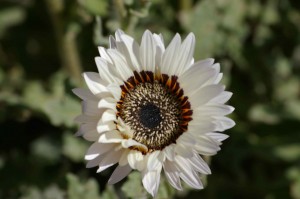Understanding the climate cycle in southwest Idaho
Southwest Idaho may have a relatively short warm growing season, but, with a little planning, the cooler seasons can be used to grow vegetables that don’t actually grow well in the dry, hot summer months. Now is a good time to begin that planning. That way good weather days can be used for preparation and the whole process can be more fun and relaxing.
A 6 month spread calendar is useful for making notes. Its handy for clear thinking to be able to see several months on the same page. I’m sure you could achieve the same effect by printing some free calendar pages and taping them together.
January:
I go through my seed supplies, order seeds, use my garden charts to plan my planting, and make a tentative schedule for getting things done during the late winter/spring season. This includes when to begin various seeds.
The packages tend to be overly pessimistic about some plants’ frost tolerance, so I use the experience of watching when my volunteers from last year’s seeds sprout to gauge planting times.
Sometimes the instructions seem optimistic about how long it will take for things like peppers to grow to a size suitable for transplanting, so I begin them a week or two earlier. It may be because it is just hard for me to keep it warm enough in my greenhouse in early spring for them to feel like growing. Maybe its because I see the seedlings in the garden nurseries and am always trying to get mine just as big.
February:
Now it is time to get serious about cleaning and organizing the greenhouse, if I haven’t already. I’ll check my grow lights, in case I need replacements. I’ll start buying bags of seed starting soil. (see more about seed starting by clicking here)
Mid to late February, I will be planting things like peppers, small flower seeds, and tiny herb seeds that take forever to even sprout. I’ll see if my spray nozzle in the greenhouse is still functional AND spraying with a fine enough mist for tender seedlings.
March:
In March, things start to get more exciting, as I can actually plant peas, lettuce, California poppies, sweet peas, radishes, and spinach outside. If the beds have been prepared the previous fall, it might even be possible to plant them in February and they will come up when they are ready. I always love the burst of lettuce volunteers that signals the garden is really coming to life.
April:
The advent of April means tomato and leek seeds can be planted indoors. Also, some various flower seeds, like petunias, thunbergia, zinnia, and nasturtium.
Outside plantings will work now for the cole crops, such as broccoli and cabbage. In fact, early broccoli is often aphid free for me. However, don’t forget to take precautions against cabbage maggots.
Other things that can usually be planted: onions, carrots, dill, beets. Don’t forget a second and third planting of lettuce over the course of the month. Volunteers that are seen coming up can be transplanted, too.
May:
Potatoes can be planted in early May, though I have planted them in April while keeping an eye on the frost. A second planting of carrots might be nice.
I will also start the last of my seeds indoors in April, for things that really only take about 4 weeks to be ready to plant out. Sometimes I plant things like cucumbers and melons in pots just because I’m impatient, but they often do best just planted directly sometime during the end of May, depending on the weather.
June:
The very end of May and beginning of June are finally the time for all the warm weather crops to be direct planted. Things like squashes, green beans, and corn won’t sprout until the soil is warm enough anyway. If it is cold and wet, they will simply rot in the ground, so there is no use trying to do that early.
One last planting of lettuce can be made in time to mature before the temperatures go too high. Peas will likely be blooming by now.
Summer Perspectives:
At this point, the planting is done until some mid-summer plantings for fall harvest. Weeding, watering, and insect control provide a chance to watch the plants grow and enjoy the outdoors before the super hot months at the end of summer. And, of course, there will be a succession of things ready to pick and eat.
I have a couple of things every year that don’t do well, despite my best efforts. It is typically something different each season, so I try again the next year. I am constantly learning, the weather is never exactly the same, life events interrupt inopportunely. But I keep plugging along, growing my garden in the moments that I have, because it gives me a little taste of heaven.


